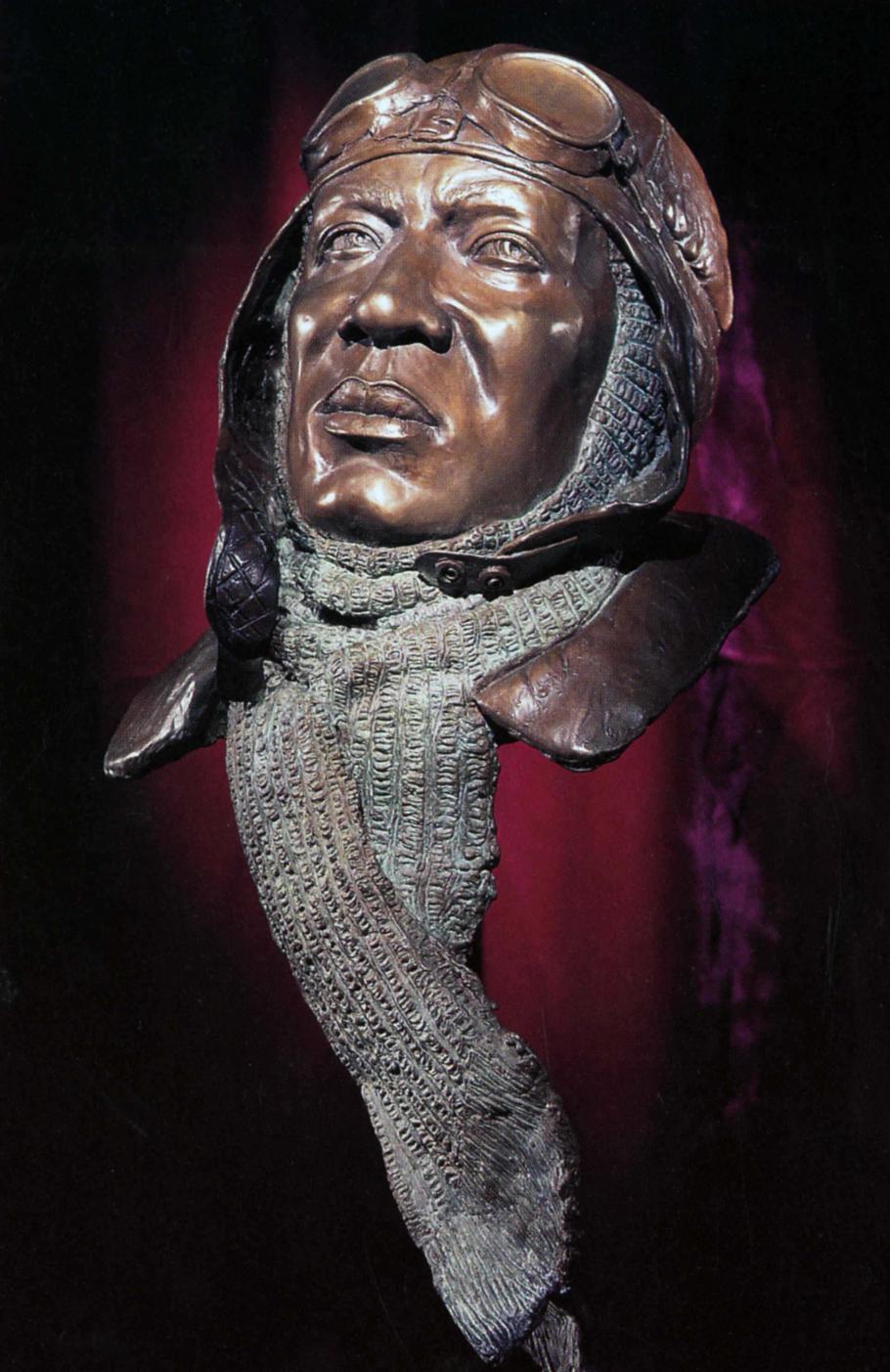Eugene Jacques Bullard is considered to be the first African-American military pilot to fly in combat, and the only African-American pilot in World War I. Ironically, he never flew for the United States.
Born October 9, 1895, in Columbus, Georgia, to William Bullard, a former slave, and Josephine Bullard, Eugene’s early youth was unhappy. He made several unsuccessful attempts to run away from home, one of which resulted in his being returned home and beaten by his father. In 1906, at the age of 11, Bullard ran away for good, and for the next six years, he wandered the South in search of freedom.
In 1912 he stowed away on the Marta Russ, a German freighter bound for Hamburg, and ended up in Aberdeen, Scotland. From there he made his way to London, where he worked as a boxer and slapstick performer in Belle Davis’s Freedman Pickaninnies, an African American entertainment troupe. In 1913, Bullard went to France for a boxing match. Settling in Paris, he became so comfortable with French customs that he decided to make a home there. He later wrote, “… it seemed to me that French democracy influenced the minds of both black and white Americans there and helped us all act like brothers.”
After World War I had begun in the summer of 1914, Bullard enlisted in the French Foreign Legion. While serving with the 170th Infantry Regiment, Bullard fought in the the Battle of Verdun (February to December 1916), where he was wounded seriously. He was taken from the battlefield and sent to Lyon to recuperate. While on leave in Paris, Bullard bet a friend $2,000 that despite his color he could enlist in the French flying service. Bullard’s determination paid off, and in November 1916 he entered the Aéronautique Militaire.
Bullard began flight training at Tours in 1916 and received his wings in May 1917. He was first assigned to Escadrille Spa 93, and then to Escadrille Spa 85 in September 1917, where he remained until he left the Aéronautique Militaire. In November 1917, Bullard claimed two aerial victories, a Fokker Triplane and a Pfalz D.III, but neither could be confirmed. (Some accounts say that one victory was confirmed.) During his flying days, Bullard is said to have had an insignia on his Spad 7 C.1 that portrayed a heart with a dagger running through it and the slogan “All Blood Runs Red.” Reportedly, Bullard flew with a mascot, a Rhesus Monkey named “Jimmy.”
After the United States entered the war in 1917, Bullard attempted to join the U.S. Air Service, but he was not accepted, ostensibly because he was an enlisted man, and the Air Service required pilots to be officers and hold at least the rank of First Lieutenant. In actuality, he was rejected because of the racial prejudice that existed in the American military during that time. Bullard returned to the Aéronautique Militaire, but he was summarily removed after an apparent confrontation with a French officer. He returned to the 170th Infantry Regiment until his discharge in October 1919.
After the war Bullard remained in France, where he worked in a nightclub called Zelli’s in the Montmartre district of Paris, owned a nightclub (Le Grand Duc) and an American-style bar (L’Escadrille), operated an athletic club, and married a French woman, Marcelle de Straumann. During this time Bullard rubbed elbows with notables like Langston Hughes, F. Scott Fitzgerald, and Josephine Baker.
By the late 1930s, however, the clouds of war began to change Bullard’s life dramatically. Even before World War II officially began in 1939, Bullard became involved in espionage activities against French fifth columnists who supported the Nazis. When war came he enlisted as a machine gunner in the 51st Infantry Regiment, and was severely wounded by an exploding artillery shell. Fearing capture by the Nazis, he made his way to Spain, Portugal, and eventually the United States, settling in the Harlem district of New York City.
After his arrival in New York, Bullard worked as a security guard and longshoreman. In the post-World War II years, Bullard took up the cause of civil rights. In the summer of 1949, he was involved in an altercation with the police and a racist mob at a Paul Robeson concert in Peekskill, New York, in which he was beaten by police. Another incident involved a bus driver who ordered Bullard to sit the back of his bus. These events left Bullard deeply disillusioned with the United States, and he returned to France, but was unable to resume his former life there.
During his lifetime, the French showered Bullard with honors, and in 1954, he was one of three men chosen to relight the everlasting flame at the Tomb of the Unknown Soldier in Paris. In October 1959 he was made a knight of the Legion of Honor, the highest ranking order and decoration bestowed by France. It was the fifteenth decoration given to him by the French government.
In the epilogue to his well-researched book, Eugene Bullard, Black Expatriate in Jazz-Age Paris (Athens: Univ. of Georgia Press, 2000), Craig Lloyd points out the poignancy of Bullard’s situation in the United States: “The contrast between Eugene Bullard’s unrewarding years of toil and trouble early and late in life in the United States and his quarter-century of much-heralded achievement in France illustrates dramatically … the crippling disabilities imposed on the descendants of Americans of African ancestry … .”
In 1992, the McDonnell Douglas Corporation donated to the National Air and Space Museum a bronze portrait head of Bullard, created by Eddie Dixon, an African American sculptor. This work is displayed in the museum’s Legend, Memory and the Great War in the Air gallery.
Postscript: On September 14, 1994, Bullard was posthumously commissioned a second lieutenant in the U.S. Air Force. A display case in the National Museum of the U.S. Air Force in Dayton, Ohio, honors him.


